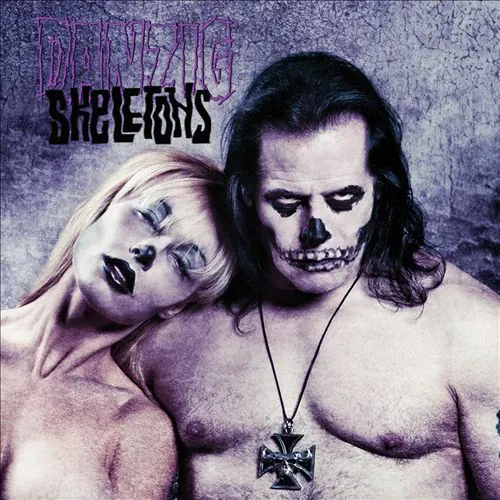
Danzig
Top Danzig albums
Top Danzig lyrics
Danzig biography
During his time in the seminal hardcore band the Misfits, vocalist Glenn Danzig displayed a fascination with outlandish, graphic, often gory imagery; in forming the more heavy metal-oriented band Samhain, Danzig's lyrics delved into typical metal subject matter, but took the concept of darkness to an extreme. After the demise of Samhain, Danzig formed his own eponymous band with Samhain guitarist John Christ, ex-Rosemary's Babies drummer Eerie Von on ba**, and longtime hardcore drummer Chuck Biscuits (D.O.A., Black Flag, Circle Jerks); this band would prove a more effective vehicle for Danzig's obsession with the dark side. While that obsession can seem cartoonish at times, there is more to the band than meets the eye -- Danzig obviously relishes casting himself as the menacing, evil heavy metal frontman, and his theatricality often seems to indicate that his posturing is not meant to be taken very seriously. At the same time, the darkness of Danzig's vision has increasingly expressed itself over the band's career in a heavily romanticized, brooding, gothic sensibility, more quietly sinister and darkly seductive than obviously threatening or Satanic, and the group's music has progressed from simple, blues-based heavy metal riffs to more atmospheric, coldly haunting song textures that attempt to sonically replicate the feel of the lyrics. br /br /Glenn Danzig cofounded the Misfits in Lodi, NJ, in 1977. When the hardcore band broke up in 1983, Danzig formed the metallic, brooding Samhain in order to experiment with different sounds, but that project imploded as well. The band Danzig was put together in 1987, and quickly inked a deal with Rick Rubin's Def American label. Their self-titled debut found Danzig playing the Satanic metal singer role to the hilt, even if the band's songs sounded much the same. Danzig II: Lucifuge followed in 1990, and it broadened the band's musical palette, expanding on the simple blues riffs of the debut with more extensive forays into that style. Danzig III: How the Gods k** marked a full-fledged entry into the realm of gothic romanticism, working to create moods rather than pounding heavy metal aggression; "Dirty Black Summer" and "How the Gods k**" became staples on MTV's Headbanger's Ball. Glenn Danzig next released a solo project, Black Aria, a quasi-operatic attempt at cla**ical instrumentals depicting the fall of Satan from heaven. The band broke through into the mainstream in 1993, when a live video for "Mother," a song originally released on Danzig, became an inescapable smash on MTV and even charted as a single, nearly cracking the Billboard Top 40. Meanwhile, Danzig contributed a track entitled "Thirteen" to Johnny Cash's acclaimed 1994 effort American Recordings. The more experimental Danzig 4 was released in 1994 and entered the charts at number 29, but its quiet, moody, atmospheric subtlety didn't find as much favor with the band's new audience as the anthemic "Mother," while some longtime fans dismissed it as mellow and therefore commercial. During the supporting tour, Chuck Biscuits left the band and was replaced by Joey Castillo. Following the tour, Danzig broke up the band and formed a new version featuring ex-Prong guitarist/vocalist Tommy Victor, drummer Castillo, and ba**ist Josh Lazie; this lineup released Danzig 5: Blackacidevil on Halloween 1996. Blackacidevil was ignored by both the press and the public, falling out of the charts after a mere three weeks. 6:66 Satan's Child followed in 1999; Live on the Black Hand Side appeared two years later. In 2002 and 2004 Danzig released the stripped-down I Luciferi and Circle of Snakes, both a return to form that found the artist emulating the simplistic brutality of his 1988 debut. ~ Steve Huey, All Music Guide

